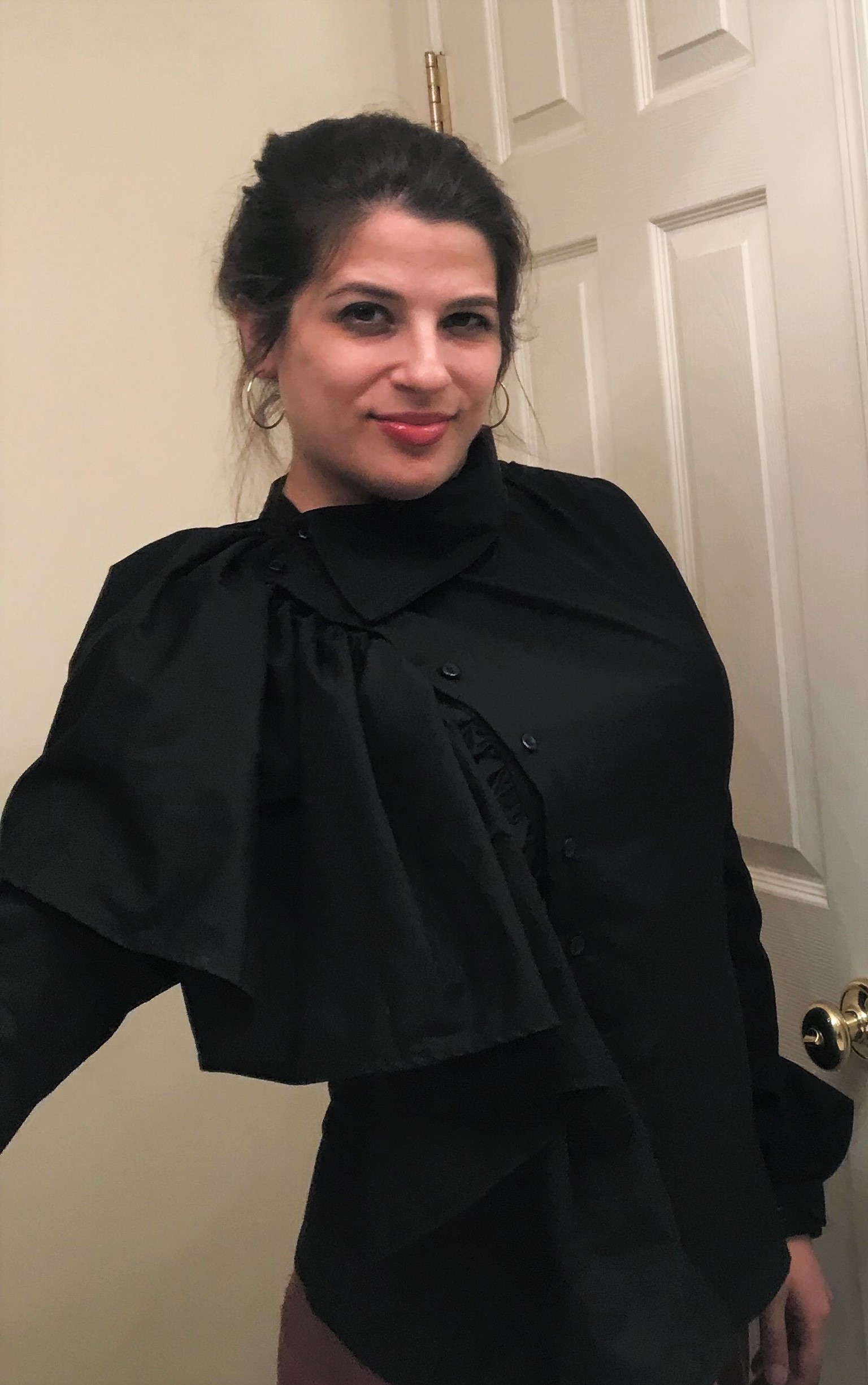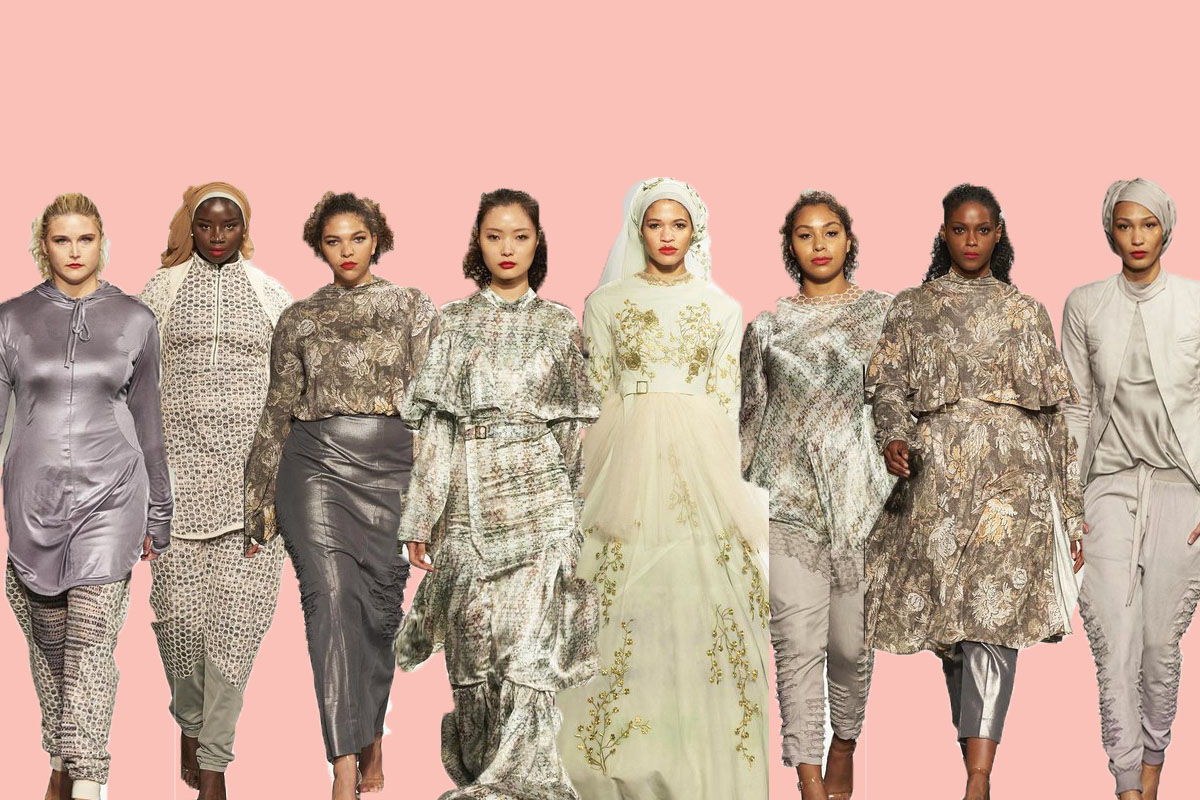Ayana Ife, a contestant on the 16th season of Project Runway, competed with a mission: to fulfill each challenge with a modest garment. Ayana’s appearance telegraphed a young Muslim woman full of personality, a hard worker, and above all, commitment.
When I first started watching Project Runway, I was growing up Orthodox Jewish and dressing modestly. In my community, that meant skirts below the knees, shirts above the collarbone, and sleeves past the elbow, occasionally with some knee socks thrown in. The show in those early days filled me with wonder. What would it be like if I could wear any of these clothes? What would I be like if I could wear any of these clothes? Project Runway made design possibilities feel accessible and immediate; I could witness talented creators make them right before my eyes.
But what if they all had to make modest clothes? Would the beautiful talent and variety on display diminish in any way, or would the designers rise to the challenge I was working with every day?
It’s not easy to find modest clothes. I used to look at common fashion from the ’50s and ’60s with envy, when secular and religious fashionistas alike dressed in tailored suits and dresses that satisfied all of the modesty requirements. The ’90s weren’t too bad, since floor-length jean skirts and raglan tees were in at the time. Then the ’00s hit. Say hello to spaghetti strap tank tops, pleated miniskirts, and Britney Spears’s cleavage. Taboo looks were walking the red carpet and the options for modest dress became less and less available. I remember when Old Navy would put out a maxi skirt with a cute print, everyone in my Orthodox Jewish high school would be wearing it. It felt like such a treat to find wearable clothing in mainstream stores, in contrast to religious brand names that wanted to conceal my body rather than celebrate it.
Ayana advanced through the usual gauntlet of Project Runway challenges, excelling in most. In the unconventional materials challenge she struggled to find enough “fabric” to cover her model. She often made corresponding headgear to match her garment, many of which would suit married Orthodox women who cover their hair. Perhaps most intriguing was her ability to keep her designs sassy, shaped, and sometimes even sexy, while covering up her models’ skin. Ultimately she placed second in the competition, after showing a modest collection at Fashion Week.
Other than a few minor differences – they can wear pants; our single women can show our hair – Muslim and Jewish fashion have a lot in common. It’s rare to see that exemplified in the same room, though, not only because of political tensions but also due to the fact that both religions feel the need to sequester their communities from the outside world. That’s been gradually changing. The head wrap enthusiasts over in the Wrapunzel community consist of Jewish and Muslim women who share a desire to cover their hair artistically. Modest swimsuit companies are moving away from terms like “burqinis” or “shvimkleids,” which might alienate otherwise like-minded consumers, in favor of more neutral language to attract women of all walks. Online retailers like eShakti, who offer customizable sizes, hemlines, necklines, and sleeve lengths for a flat price, are popular across the board with modest dressers.
After Ayana’s season ended, I went to check her out online and discovered she had an Etsy store. Not only that, a black version of her warrior woman look, my favorite piece from the season, was on sale for $100. I couldn’t decide what was more precious – that she was on Etsy or that I could actually afford clothes from a Project Runway alum. (Less precious was when it took three months to receive my order, but I took deep breaths and kept rooting for her anyway.)
I imagined that by wearing the blouse, I’d be making a statement – one of support, surely, for a designer who gave voice to modest dressers everywhere on a national platform. But I imagined a bigger picture, too. I imagined that perhaps, as a Jewish woman wearing a garment designed by a Muslim woman, I was adding a brick to the bridge that should and someday could stretch between our cultures. Not as an exception, but as the rule.
When I opened the package containing my new dress shirt, it didn’t feel like a political statement. It just felt like a beautiful, elaborate piece of clothing. It wasn’t going to give me the power to break down borders or walls by wearing it. Slowly, it dawned on me that I’d been trying to fulfill tikkun olam — healing the world — with consumerism, which now seems absurd. How had I misplaced my attempt to be subversive? Was I confusing this feeling with a longing for representation on a favorite show? Had I projected onto Ayana somehow, when the clothes she was creating weren’t intended for those purposes? She had a mission, yes, but maybe that had nothing to do with me.

Examining fashion from the perspective of art, though, I have the right. After all, that’s why I watch Project Runway: for the fashion, for the art. (Lord knows there isn’t enough drama to keep me there.) For the first time, thanks to Ayana’s blouse, I have the ability to interact with it. Consumerism and ownership aside, I can wear and interpret the blouse as superficially as I like, making it a personal experience by definition.
Which is how I choose to see it. Whatever Ayana’s intentions were, I choose to wear her clothes in celebration of a modest designer in a secular environment. So forgive me. If you see me in a ruffled asymmetrical black shirt, strutting across the room and feeling like a million bucks, know that it’s not because I’m part of the solution to world peace. It’s because I’m wearing living art, created by a Muslim woman, for me.



